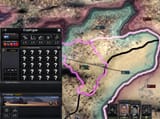Search Results
6/10/2025, 4:47:00 AM
Steel Across the Taklamakan
July 17, 2023
Lieutenant General Ryoji Takemoto was not happy. It was the middle of the summer, and he was deployed into the heart of one of the world's worst deserts to support what some considered to be a doomed intervention. He and the 7th and 10th Armored Divisions had traveled through Ladkh, India, the highest plateau in India at 3,000 meters, to reach Hell. And they sent vehicles the entire way. How most of the equipment managed to make it through, Takemoto will wonder to the end of his days. But they made it.
Their allies are militia with rifles and not much else. Behind enemy lines is a trapped mechanized division and some regular infantry, but what Takemoto can rely on this side of the Taklamakan Desert are mere militia units raised weeks ago.
Half his force are experienced regulars, almost veterans, but the other half are merely trained, though what training they did receive was in the fire of battle. Each has been blooded in battle; they are reliable.
The General, Yoshihide Yoshida, also is reliable. Though, he is the first General Officer not to have been taught at the National Defense Academy, he has worked his way up from Chief Sergeant to the top military command, an impressive background in the usually conservative and rigid Nippon military command structure. He is known for being an aggressive officer, which Takemoto appreciates.
Ultimately, what they do here in the Tarim Basin of Xinjiang might not even matter--Shina might choose simply to invade if the situation does not go their way. But at least Nippon is trying, and for the first time in modern history, it has sent thousands of soldiers in armed conflict against another nation. That has to count for something, even if the war's outcome is predetermined.
But it might not be, and so Takemoto and the Nippon Intervention Force rides out from Kashgar to fight Shina in its backyard.
July 17, 2023
Lieutenant General Ryoji Takemoto was not happy. It was the middle of the summer, and he was deployed into the heart of one of the world's worst deserts to support what some considered to be a doomed intervention. He and the 7th and 10th Armored Divisions had traveled through Ladkh, India, the highest plateau in India at 3,000 meters, to reach Hell. And they sent vehicles the entire way. How most of the equipment managed to make it through, Takemoto will wonder to the end of his days. But they made it.
Their allies are militia with rifles and not much else. Behind enemy lines is a trapped mechanized division and some regular infantry, but what Takemoto can rely on this side of the Taklamakan Desert are mere militia units raised weeks ago.
Half his force are experienced regulars, almost veterans, but the other half are merely trained, though what training they did receive was in the fire of battle. Each has been blooded in battle; they are reliable.
The General, Yoshihide Yoshida, also is reliable. Though, he is the first General Officer not to have been taught at the National Defense Academy, he has worked his way up from Chief Sergeant to the top military command, an impressive background in the usually conservative and rigid Nippon military command structure. He is known for being an aggressive officer, which Takemoto appreciates.
Ultimately, what they do here in the Tarim Basin of Xinjiang might not even matter--Shina might choose simply to invade if the situation does not go their way. But at least Nippon is trying, and for the first time in modern history, it has sent thousands of soldiers in armed conflict against another nation. That has to count for something, even if the war's outcome is predetermined.
But it might not be, and so Takemoto and the Nippon Intervention Force rides out from Kashgar to fight Shina in its backyard.
Page 1
